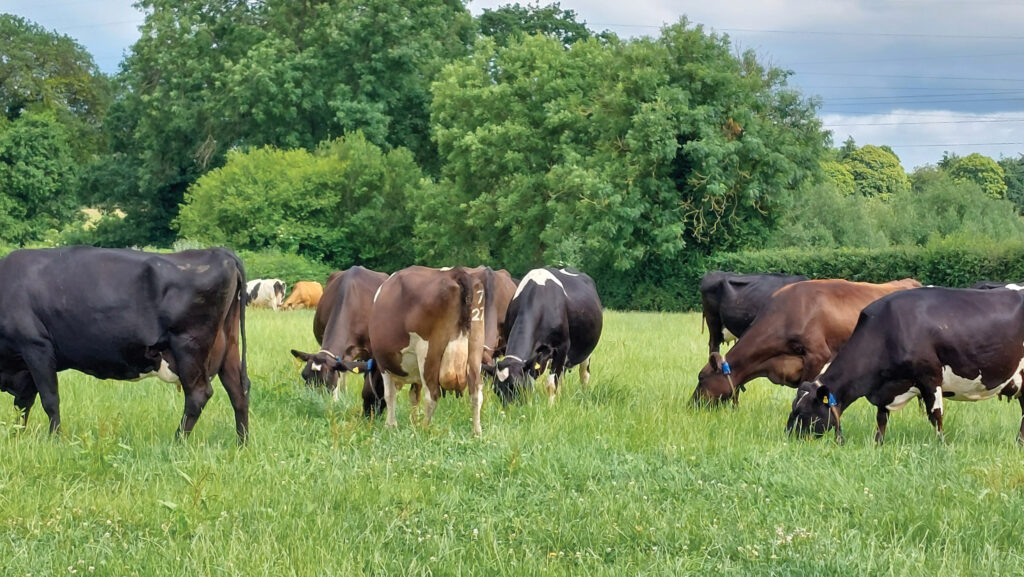Tips on managing sweeper bulls
 © MAG/Shirley Macmillan
© MAG/Shirley Macmillan To achieve good pregnancy rates, careful planning and consideration are required when using sweeper bulls.
Heat detection technology, coupled with the use of sexed semen, has meant that fewer sweeper bulls should be needed in a block-calving herd because of higher submission rates.
“More cows are pregnant in the first four weeks, which means fewer sweepers to manage,” says Somerset-based independent veterinary consultant Kate Burnby.
When sweeper bulls are needed, however, Kate says it is important to plan a bull strategy.
This is best done at the end of every mating season, when fertility performance is reviewed.
Apart from the safety aspect (particularly when using multiple bulls), thinking ahead results in bulls working more effectively and less likely to go lame or become unwell, she explains.
See also: Fertility advice for autumn-calving dairy herds
“It’s not a case of putting bulls in and saying don’t worry about it.
“Using sweeper bulls needs management, starting with where they will be kept when not used.
“If you are breeding your own, you must decide at least 18 months beforehand which cows to breed from, then look at the economics of rearing – it’s not free.”
Age range
Ideally, bulls should be at least 15 months of age and no older than three years when used.
“Young bulls will have fewer health problems, but at 15 months, they will only be able to run with up to 15 cows.
“The rule of thumb is one open animal for each month of age up to [maturity] about 2.5 years,” she says, adding that as mature adults bulls can work with 30 cows.
“The smaller testicular size [of younger bulls] means they produce fewer sperm in a 24-hour period.
“Bulls might be keen and working, but have less capacity for getting cows in-calf.
“If they can get one-to-two cows pregnant in a day, the next three-to-four cows they serve won’t get pregnant.”
Size and stature
A 12-month-old bull may lack the stature to physically be able to serve mature cows.
This is why bull selection should start with size, followed by temperament and calving ease, not just focus on breed, says Kate, although farms with their own beef operation may select for a higher-value beef bull.
Quarantine and fertility
The advantage of homebred bulls is their known health status. Bought-in bulls need at least eight weeks’ quarantine, allowing for a full vaccination programme.
All bulls, however, need annual fertility tests. “About one third of older bulls are unsatisfactory, and 20% of younger bulls fail fertility checks,” Kate points out.
When herds still need several bulls, Kate advises buying from one source and keeping animals together in their own age group. A mature bull will compete with younger animals rather than teach them to serve cows.
“You can’t take one bull away from a group and add him again later; they need to stay in their groups. Introducing new bulls leads to injuries,” she warns.
Bulls must be rotated and rested every milking, or after a maximum of 24 hours.
Kate favours keeping them behind in the paddock when cows leave for the collecting yard.
After milking, as cows move onto fresh grass, they can then graze with a different cohort of bulls.
“It reduces the amount of walking bulls have to do and stops them getting too much cake in the parlour,” she says, adding that management is easier at grass than during housing.
“When bulls are on maize and high-energy winter diets, in autumn-block herds, they can become over-conditioned.
“They are also on concrete, which leads to more feet and leg problems or injuries.
“It might be more appropriate to have a bull in a pen [in the collecting yard] which acts as an extra heat detection aid [and he can serve those bulling cows].”
